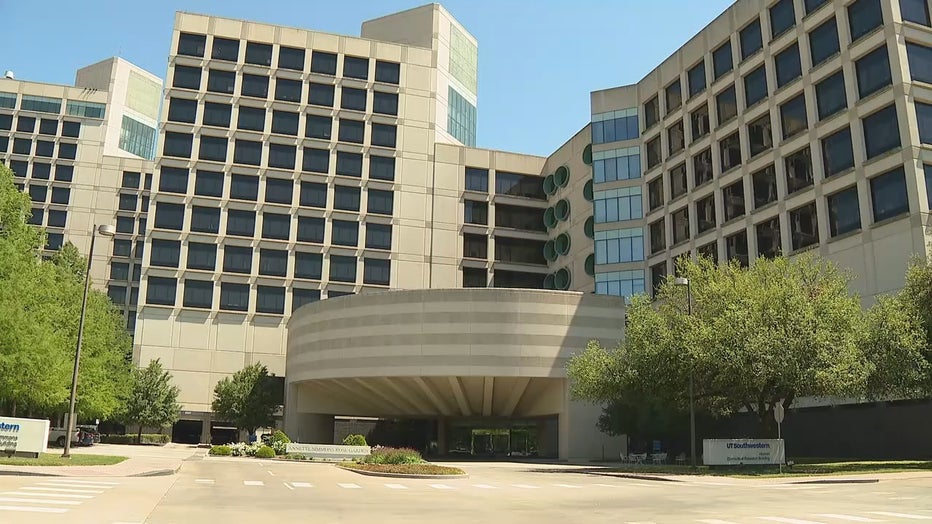UT Southwestern: COVID hospitalizations will peak next month, but forecast shows improvements

UT Southwestern: COVID hospitalizations will peak next month, but forecast shows improvements
Hospital cases of COVID-19 patients are still expected to peak next month at levels near or above what North Texas saw during the surge last January. However, the new forecast shows some signs of improvement.
DALLAS - Hospital cases of COVID-19 patients are still expected to peak next month at levels near or above what North Texas saw during the surge last January. However, the new forecast shows some signs of improvement.
The UT Southwestern COVID forecast expects the situation to get worse before it gets better.
Hospitalizations are up in the North Texas region, but so are vaccinations and the use of masks. That could start to bring the COVID infection rate down faster than previously predicted.
UT Southwestern predicts hospitalizations in North Texas are expected to continue to increase over the next several weeks.
"This whole surge candidly is two things: it’s primarily the delta variant, and it’s primarily going after the unvaccinated," said Stephen Love with the DFW Hospital Council.

At the current pace, the forecast predicts Dallas and Tarrant counties will see hospital cases reach levels in September that are above previous surge totals in January.
Instead of Dallas County expecting to reach 1,500 hospitalized COVID patients in mid-September, now the projection is 1,300 for a daily high.
In Tarrant County, the projected peak was scaled back even more from 1,900 to 1,300.
UT Southwestern: COVID-19 hospitalizations set to hit pandemic all-time high
The highly contagious delta variant is now responsible for 95% of new infections.
"It also has the ability to attach better to the cells in your throat as well as in your lungs, which is why so many people are ending up hospitalized," explained Dr. Trish Perl with UT Southwestern.
Parkland Hospital currently has 206 COVID patients. Eight are pregnant women who are in active labor.
"There are severe adverse outcomes for mother and baby during a COVID-19 infection," said Dr. Anthony Fauci, the president’s chief medical advisor. "Therefore, it’s important for pregnant women and those thinking of getting pregnant to get vaccinated."
The rate of weekly admissions among younger age groups in North Texas has already exceeded January peaks.
Dr. John Carlo is with the COVID-19 Taskforce for the Texas Medical Association.
"It is possible that we're seeing those results unfold right now thanks to that increased awareness, and I certainly hope it continues," he said. "Because what's going on our hospital systems right now is it's a very, very busy situation, and we don't want to see it get busier."
Right now, our 19-county region has more than 3,400 COVID patients in North Texas hospitals.
As of Tuesday, there are 95 confirmed COVID pediatric patients hospitalized. That’s the highest total for that group since the pandemic started, coupled with the untimely spread of a different respiratory virus.

UT Southwestern: COVID hospitalizations will peak next month, but forecast shows improvements
The UT Southwestern COVID forecast expects the situation to get worse before it gets better.
"We're also simultaneously dealing with an RSV outbreak right now, which is typical for this leading to more occupancy of these pediatric hospital beds," explained CDC Director Dr. Rochelle Walensky.
The UT Southwestern report does include some encouraging trends.
In Dallas County, where self-reported masking in public is at 80%, new hospitalizations remain flat. There’s also been a decrease in testing positivity rates.
The report found that due to increases in masking and vaccination rates, rates of hospitalization are not increasing as steeply as previously predicted. It added that once hospitalizations do peak, they may begin to decline more quickly.
"What that means is that's moving in the right direction," Love said.
While the vaccination rate has increased and positivity rate on the decline, the Labor Day holiday could derail some of that progress.
"Hopefully this Labor Day holiday weekend, we all do our part," Dr. Carlo said. "We really need to make sure we're aware of our surroundings."
Dr. Perl wants to remind people that when you get vaccinated, it takes 10 weeks to get a full immune response. That's why she says it’s important to still wear a mask with the highly contagious delta variant still circulating.

